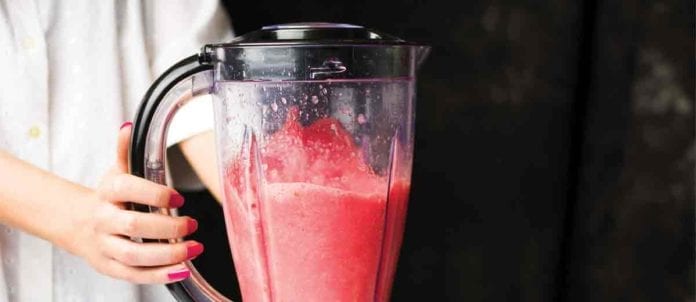It can come in a cup, glass or bowl and as a meal replacement, caffeinated beverage, cocktail or a health-boosting concoction. The smoothie category is broad and subjective and, therefore, the potential for creativity — in both taste and presentation — is limitless. It doesn’t hurt that smoothie sales are projected to continue growing in 2018. Recent data from DataEssential’s MenuTrends database shows customers gravitate towards smoothies, primarily due to the healthy reputation the category enjoys. A smoothie is most often perceived as a healthier beverage or meal alternative but, most of all, people simply love smoothies for their refreshing and delicious qualities.
The report shows smoothie and juice choices are perpetually increasing on restaurant menus. From 2005 to 2017, smoothie and juice options in North-American restaurants grew by 13 per cent and 10.6 per cent, respectively, with eight per cent of all menus in 2017 incorporating smoothies. Going into 2018, operators are more optimistic about smoothie growth, compared to juices.
“I see a move away from juice and more towards smoothies and bowls,” says Ryan Carpenter, owner of U.S.-based smoothie restaurant chain Moberi. “Consumers are seeking out ingredients that serve a purpose and it’s much easier to accomplish this in blends than in cold-pressed juice. Acai bowls will continue to grow in popularity, but other smoothie bowls (like those mixed with greens or dragonfruit) with an emphasis on superfood toppings will also be more common. I’m also excited about new twists on old classics, like ice cream made out of superfoods.”
FLAVOURFUL YEAR
According to Nestlé Professional, the most popular smoothie ingredients in 2018 will be strawberry, banana, mango, pineapple, raspberry, orange, blueberry, coconut, peach, apple, vanilla, tropical, chocolate, piña colada, peanut butter, lemon, kale, passionfruit, pomegranate, acai, papaya, kiwi, blackberry and carrot.
Smoothies come in many forms. A smoothie bowl, for example, allows the freedom to incorporate larger whole ingredients — especially ones that offer health benefits, such as flax seeds, chia seeds, goji berries and bee pollen. These ingredients offer not only health benefits, but a wealth of decorative colours for infinite play with presentation. Meal-replacement smoothies are popular with active people with busy schedules who lack the time for sit-down meals. A meal-replacement smoothie can contain up to 1,500 calories and is high in protein. In addition to caloric and protein requirements, a good meal-replacement smoothie will also include at least two fruits to meet vitamin and fibre needs.
On the more adventurous side, cocktail smoothies and caffeinated smoothies have been slowly growing in popularity since 2016 and are on trend this year, according to Niles, Ill.-based beverage-development company, Imbibe.
Looking ahead, global research firm, Technavio estimates the North American smoothie market will be growing at a compound annual growth rate of 8.59 per cent until 2021.
Written by Eric Alister


















